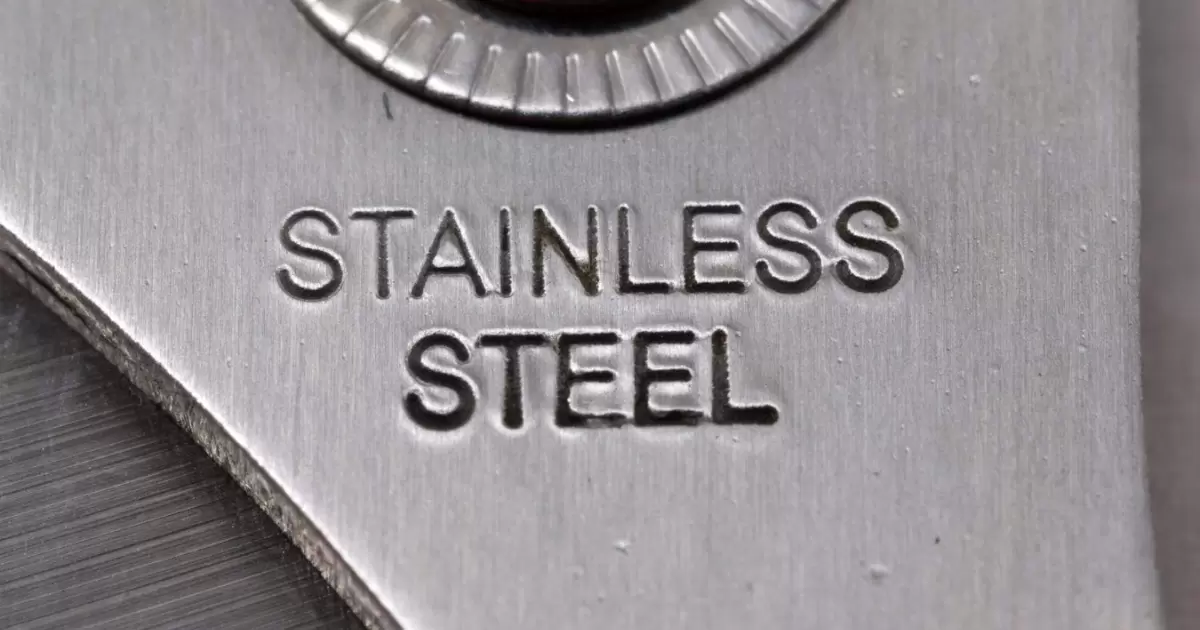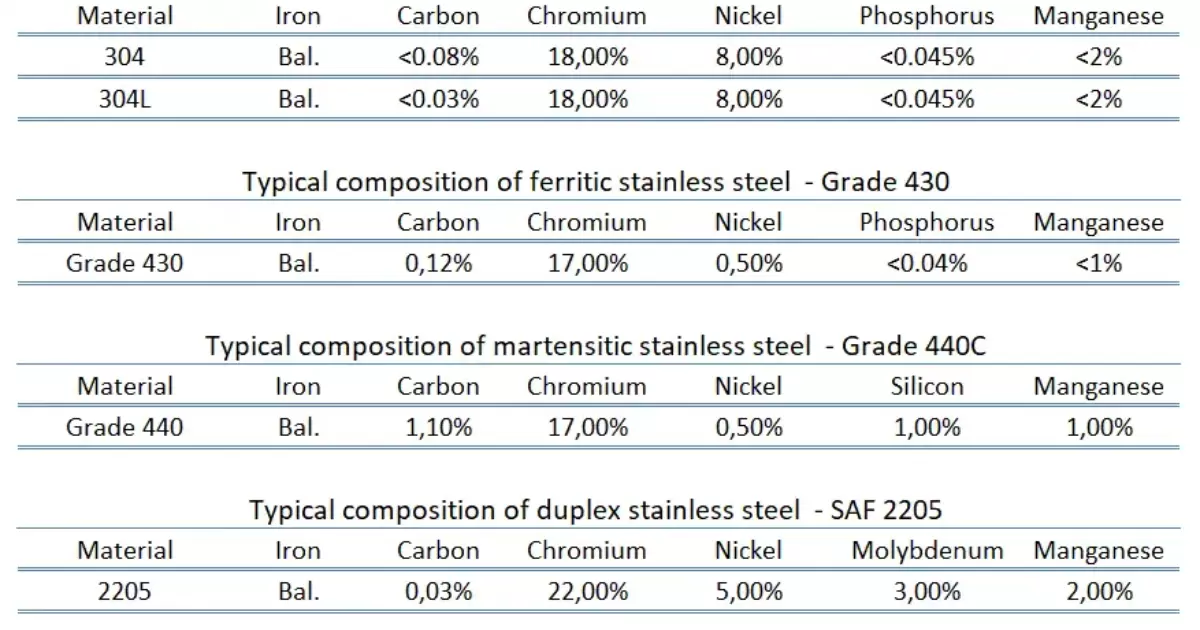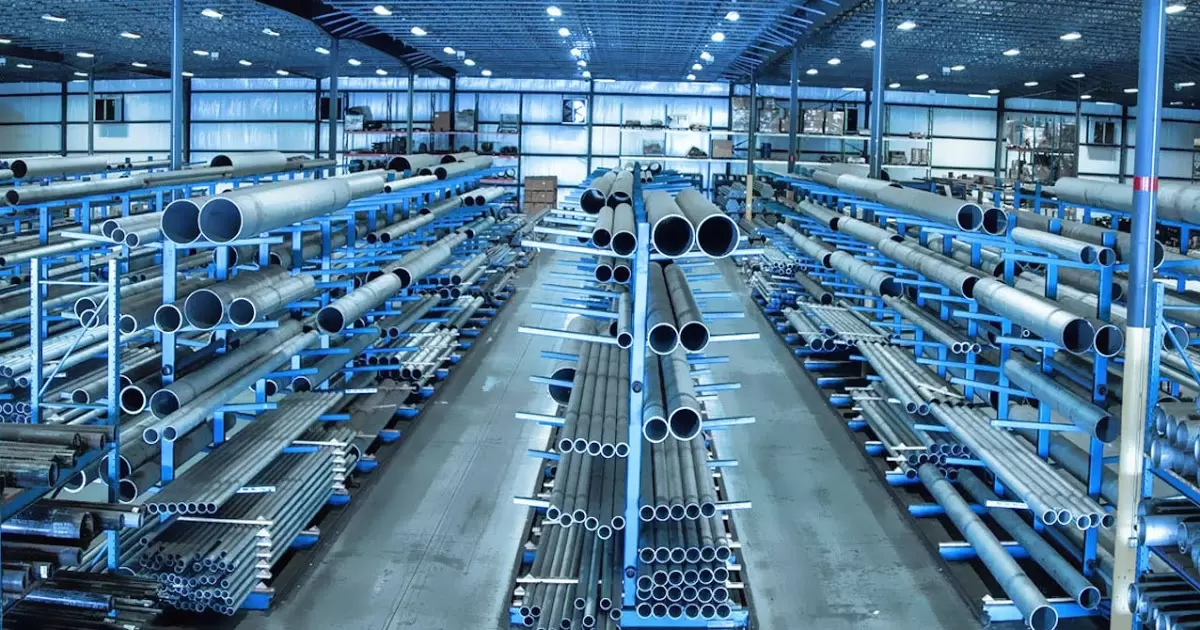Stainless steel is a ubiquitous material that surrounds us in countless objects and structures we interact with daily. From the kitchen appliances and cookware in our homes to the buildings, vehicles, and public infrastructure all around us, this remarkable metal alloy is practically everywhere. But what exactly is stainless steel, and what makes it so special? In this comprehensive guide, we’ll dive deep into the fascinating world of stainless steel, exploring its history, composition, types, remarkable properties, and widespread applications.
Durable, versatile, and sleek, stainless steel is the miracle metal transforming kitchens, industries, and even jewelry! But what exactly is stainless steel? Discover its unique composition, amazing properties, and the countless ways it enhances our world.
Stainless steel is a remarkably versatile alloy known for its resistance to rust and corrosion. This resilience stems from its chromium content, which forms a protective oxide layer. Stainless steel comes in various grades, each with unique properties, making it ideal for applications ranging from kitchenware and appliances to industrial equipment and architectural structures.
History and Discovery of Stainless Steel
The journey of stainless steel began in the early 1900s, when numerous metallurgists were experimenting with various metal alloys. One of the pioneering figures was Harry Brearley, an English metallurgist working in Sheffield, England. While investigating erosion-resistant alloys for gun barrel linings, Brearley’s lab noticed that certain steel samples with higher chromium content were remarkably resistant to staining and etching by acidic solutions.
This accidental discovery in 1913 led to the development of the first true stainless steel alloy, which Brearley initially called rustless steel. An anecdote from the lab recounts knives treated with this new alloy emerging spotless from harsh acid baths, while regular carbon steel knives were heavily stained, thus earning the name stainless.
In the years following Brearley’s breakthrough, scientists and manufacturers around the world rapidly advanced stainless steel technology. Key developments included the introduction of chromium-nickel austenitic grades in the 1920s, which exhibited even greater corrosion resistance and formability, making them ideal for a wide range of applications.
What Exactly Is Stainless Steel?
Stainless steel is a versatile metallic alloy that primarily consists of iron and chromium, along with varying amounts of other alloying elements. The key characteristic that defines stainless steel is its minimum chromium content of 10.5% by mass. This significant chromium presence allows the formation of an invisible, ultra-thin passive layer of chromium oxide on the metal’s surface.
This passive layer acts as a tight shield, preventing further oxidation (rusting) and protecting the underlying metal from corrosion and staining. Without this passive layer, the iron in the alloy would readily rust and corrode when exposed to air, moisture, or other environmental factors.
Key Alloying Elements in Stainless Steel
While iron and chromium form the base, various other elements are added to stainless steel to tailor its properties for specific applications:
Iron: The primary base metal, providing strength and affordability.
Chromium: The key alloying element (min 10.5%) enabling corrosion resistance.
Nickel: Enhances corrosion resistance, especially in harsh environments. Adds strength and ductility.
Molybdenum: Improves resistance to specific forms of corrosion like pitting and crevice corrosion.
Other elements like manganese, silicon, nitrogen, etc. May be added in smaller amounts to influence specific characteristics.
The precise combination and percentages of these alloying elements determine the unique properties and characteristics of each stainless steel grade.
The Different Types of Stainless Steel
Stainless steels are broadly categorized into five major groups based on their crystalline structure and alloying compositions:
1. Austenitic Stainless Steels: The most widely used type, containing chromium, nickel, and sometimes molybdenum (e.g., 304, 316). Excellent corrosion resistance and formability.
2. Ferritic Stainless Steels: Contain chromium but little/no nickel (e.g., 430). Moderately corrosion-resistant, magnetic, and lower cost.
3. Martensitic Stainless Steels: Chromium and carbon-alloyed (e.g., 420). Highly hardenable but less corrosion-resistant. Used for cutlery, tools, bearings.
4. Duplex Stainless Steels: Dual-phase alloys with roughly equal amounts of austenite and ferrite. High strength and corrosion resistance.
5. Precipitation Hardening Stainless Steels: Strengthened via heat treatment. Used for high-temperature applications.
Each type offers unique properties suited to different manufacturing processes, environments, and end-use applications. For example, austenitic grades like 304 and 316 are incredibly versatile, combining excellent corrosion resistance with good formability and weldability, making them ideal for a vast range of products and infrastructure.
On the other hand, ferritic stainless steels like 430 are more affordable and offer moderate corrosion resistance, finding applications in automotive trim, household appliances, and construction. Martensitic grades excel in hardness and wear resistance, making them suitable for cutting tools, bearings, and other components subjected to high stress and abrasion.
Stainless Steel Grades and Numbering System
Within these broad categories, stainless steels are further classified by detailed grades identified through a numbering system. The most common system is the AISI (American Iron and Steel Institute) 3-digit codes:
200 Series: Austenitic chromium-nickel-manganese alloys.
300 Series: The largest group, austenitic chromium-nickel alloys (e.g., 304, 316).
400 Series: Ferritic and martensitic chromium alloys Most Famous In 400 series are 430 and 420.
The numbering generally indicates the alloy’s composition, with the third digit often signifying a modification for specific characteristics like enhanced formability or corrosion resistance.
For example, 304 is an austenitic 18/8 grade (18% chromium, 8% nickel), while 316 contains molybdenum for improved corrosion resistance in certain environments.
These grade designations are crucial for selecting the appropriate stainless steel for a given application, as each grade offers a unique combination of properties and performance characteristics.
Properties of Stainless Steel
Beyond its signature resistance to corrosion and staining, stainless steel boasts an impressive array of properties that make it an exceptional material choice across countless applications:
| Property | Description |
|---|---|
| Corrosion Resistance | The chromium oxide passive layer protects stainless steel from moisture, acids, alkalis, and corrosive substances, preventing rust and staining. |
| High Strength | Stainless steels can achieve remarkable strength levels through heat treatment and work hardening processes. |
| Hardness | Many grades exhibit high hardness, making them suitable for applications requiring wear and abrasion resistance. |
| Durability and Longevity | With proper maintenance, stainless steel has an exceptionally long service life spanning decades. |
| Heat Resistance | Many stainless steel grades retain strength and structural integrity at high temperatures. |
| Low-Temperature Resistance | Certain grades perform well in extremely cold environments without becoming brittle. |
| Hygiene and Cleanability | The smooth, non-porous surface prevents bacterial growth and is easy to clean and sterilize. |
| Aesthetic Appeal | Stainless steel has a bright, attractive finish suitable for architectural and consumer products. |
| Formability and Weldability | Austenitic grades can be easily formed, machined, and welded into complex shapes and structures. |
| Recyclability | Stainless steel is highly recyclable, contributing to sustainability and resource conservation. |
These diverse properties, combined with its relatively low maintenance requirements, make stainless steel an ideal choice for harsh environments, demanding applications, and products where longevity, cleanability, and aesthetic appeal are paramount.
Manufacturing Processes for Stainless Steel
Stainless steel is produced through various metallurgical processes, each tailored to the desired grade and end product. The most common methods include:
1. Electric Arc Furnace (EAF): Scrap metal and alloying elements are melted and refined in an electric arc furnace, allowing precise control over the chemical composition.
2. Argon Oxygen Decarburization (AOD): A refining process that removes excess carbon and adjusts the chromium and nickel levels for austenitic grades.
3. Continuous Casting: Molten steel is solidified into semi-finished billets, blooms, or slabs for subsequent hot and cold rolling processes.
4. Hot Rolling: The semi-finished products are heated and rolled into desired shapes like coils, plates, bars, or structural sections.
5. Cold Rolling: Hot-rolled products can undergo further cold rolling to achieve tighter tolerances and specific surface finishes.
6. Heat Treatment and Surface Finishing: Processes like annealing, quenching, and pickling are employed to impart specific mechanical properties and surface characteristics.
These manufacturing techniques, combined with rigorous quality control measures, ensure consistent performance and adherence to international standards for stainless steel products.
Widespread Applications of Stainless Steel
Due to its exceptional properties and performance, stainless steel finds applications across a vast array of industries and products:
Construction and Architecture: Structural components, cladding, railings, roofing, and architectural features. Stainless steel’s durability and low maintenance make it ideal for both interior and exterior applications, from high-rise buildings to public infrastructure like bridges and transportation hubs.
Transportation: Automotive trim, exhaust systems, train bodies, ships, and aerospace components. The corrosion resistance and strength-to-weight ratio of stainless steel make it a popular choice for various transportation applications, from passenger vehicles to commercial shipping and aviation.
Food Service and Healthcare: Commercial kitchen equipment, food processing machinery, surgical instruments, and medical implants. The non-porous, hygienic surface and corrosion resistance of stainless steel are essential in these industries, ensuring food safety and sterile environments.
Chemical and Energy Industries: Process equipment, tanks, pipelines, and components for harsh environments. The ability of stainless steel to withstand extreme temperatures, pressures, and corrosive media make it indispensable in chemical processing, oil and gas, and power generation facilities.
Consumer Goods and Appliances: cookware, sinks, refrigerators, washers, and other household items. The combination of durability, easy cleaning, and attractive appearance make stainless steel a popular choice for consumer products, especially in the kitchen and home appliance sectors.
Artwork and Design: Sculptures, decorative objects, and furniture due to its durability and aesthetics. The versatility and aesthetic appeal of stainless steel have made it a favored material for artistic and design applications, from public art installations to high-end furniture and home decor.
The versatility of stainless steel, combined with continuous advancements in metallurgy and manufacturing processes, ensures its vital role in modern society for years to come.
Environmental Impact and Sustainability
Despite its many advantages, the production and processing of stainless steel can have environmental impacts that must be addressed. The mining and extraction of raw materials like chromium and nickel can lead to habitat destruction and water pollution if not managed responsibly.
However, the stainless steel industry has made significant strides in implementing sustainable practices and reducing its environmental footprint. Key initiatives include:
Recycling: Stainless steel is highly recyclable, and recycling rates have steadily increased, reducing the need for virgin material extraction.
Energy Efficiency: Manufacturers have adopted energy-efficient processes, such as using electric arc furnaces and recovering waste heat, to reduce energy consumption and greenhouse gas emissions.
Water Management: Improved water treatment and recycling systems have minimized water usage and prevented contamination from production processes.
Emission Controls: Advanced air pollution control systems capture and treat emissions, reducing the release of harmful particulates and gases.
As sustainability becomes increasingly important, the stainless steel industry continues to collaborate with environmental organizations, research institutions, and regulatory bodies to further minimize its environmental impact and promote responsible manufacturing practices.
Conclusion:
Stainless steel is truly a marvel of modern metallurgy, offering a unique combination of corrosion resistance, strength, durability, and aesthetic appeal. From its accidental discovery over a century ago to its ubiquitous presence in our daily lives, this remarkable alloy has revolutionized countless industries and products.
As we’ve explored, the chromium content and passive layer formation are the keys to stainless steel’s signature corrosion resistance. Combined with the ability to tailor its properties through various alloying elements and heat treatments, stainless steel continues to find new applications in ever-more demanding environments.
Whether you’re a homeowner, engineer, architect, chef, or simply someone who appreciates the ingenuity of human innovation, stainless steel is a true testament to our ability to manipulate materials for our benefit. So the next time you interact with this incredible alloy, take a moment to appreciate the rich history, science, and engineering behind its creation and the countless ways it improves our modern world.


